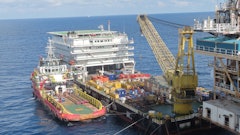
In case you haven’t heard, we are anticipating one of the strongest El Ninos on record this year. For many years, I’ve researched El Nino and La Nina, trying to understand the weather patterns and how they can impact the supply chain, but it’s complicated. El Nino causes drier, wetter, cooler and hotter weather in various combinations in various seasons. In one area, it may be wet in the winter, but dry in the summer. To make things worse, there is no single place where the data resides in a format that we can use, until now.
We’ve put together a list, by country, of the general risk associated with El Nino this winter. Because these risks are by country, state/province risks are listed in the footnotes (NOAH, 2012). With this data, you can assign a risk score to your suppliers by country and state to give a high-level picture of risk. These risks can be added to your enterprise resource planning (ERP) system, or a spreadsheet of your suppliers, and assigned scores. Based on these risk scores, you have two key actions you can take to mitigate risk:
- Identify suppliers potentially impacted based on country/state/province.
- Monitor your suppliers for increased lead times/backorders.
- Increase your lead times in your ERP system to mitigate risk.
Below is how the risk breaks down.
Drier Weather
Drier weather is serious and can have many impacts to the global supply chain. When it comes to production risk, the key areas to be concerned with are agricultural-based materials, hydroelectric power dependency and water rationing. Below are the areas that are vulnerable to dryness during an El Nino in the coming months:
- Afghanistan
- Australia
- Brazil[1]
- Canada (Northern Territory)
- Columbia
- Ecuador
- French Guiana
- Guyana
- Indonesia
- Madagascar
- Malaysia
- Mozambique
- Philippines
- Singapore
- Suriname
- Zimbabwe
Wetter Weather
Wetter weather can also impact areas negatively, especially those areas that are naturally arid and cannot handle the excess moisture, like the U.S. Southwest. In these areas, floods and mudslides can disrupt businesses and transportation. Below is a list of the areas that may tend to experience wetter weather during an El Nino in the coming months:
Warmer Weather
Warmer than normal weather is also a consequence of an El Nino. However, warmer in the northern hemisphere means a warmer winter, which is not nearly as impactful as a warmer summer in the southern hemisphere. Below is a list of the areas that are vulnerable to warmer weather this season:
- Bolivia
- Brazil (Sao Paulo)
- Canada[4]
- Chile[5]
- China[6]
- Colombia
- Costa Rica
- Guatemala
- Honduras
- India[7]
- Indonesia
- Laos
- Nicaragua
- Panama
- Peru
- Thailand
- United States[8]
- Venezuela
- Vietnam
Cooler Weather
Cooler El Nino weather may give a cooler summer in the southern hemisphere, but a colder winter in the North. Below is a list of the countries impacted by cooler El Nino weather patterns in the coming months:
- Argentina[9]
- Australia[10]
- China [11]
- Myanmar/Burma
- United States (Southwest, South and Midwest)[12]
[1] Brazilian provinces impacted by drier weather include Acre, Alagoas, Amapá, Amazonas, Bahia, Ceará, Distrito Federal, Espírito Santo, Goiás, Maranhão, Mato Grosso, Mato Grosso do Sul, Minas Gerais, Ará, Paraíba, Pernambuco, Piauí, Rio Grande do Norte, Rondônia, Roraima, Sergipe and Tocantins.
[2] Argentinian providences impacted by wetter weather include Buenos Aires, Córdoba, Entre Ríos, La Pampa, Mendoza, Río Negro, San Luis and Santa Fe.
[3] The U.S. states impacted by wetter weather include Alabama, Arizona, California, Colorado, Florida, Georgia, Louisiana, Mississippi, Nevada, New Mexico and Texas.
[4] Canadian provinces impacted by warmer weather include Alberta, British Columbia, Manitoba, New Brunswick, Newfoundland and Labrador, Northwest Territories, Nova Scotia, Nunavut, Ontario, Prince Edward Island, Quebec, Saskatchewan and Yukon.
[5] Chilean provinces impacted by warmer weather include Arica, Chacabuco, Copiapó, Iquique, Ranco and Valdivia.
[6] Chinese provinces impacted by warmer weather include Guangdong Province and the Guangxi Zhuang Autonomous Region.
[7] Indian provinces impacted by warmer weather include Andhra Pradesh, Arunachal Pradesh, Assam, Bihar, Chattisgarh, Goa, Gujarat, Haryana, Himachal Pradesh, Jammu and Kashmir, Jharkhand, Karnataka, Kerala, Madhya Pradesh, Maharashtra, Manipur, Meghalaya, Mizoram, Nagaland, Odisha, Punjab, Rajasthan, Sikkim, Tamil Nadu, Telangana, Tripura, Uttar Pradesh, Uttarakhand and West Bengal.
[8] Unites States impacted by warmer weather include Alaska, Connecticut, Idaho, Illinois, Maine, Massachusetts, Michigan, Minnesota, New Hampshire, New Jersey, New York, North Dakota, Oregon, Pennsylvania, Rhode Island, South Dakota, Vermont, Washington, West Virginia, Wisconsin and Wyoming.
[9] Argentinian provinces impacted by cooler weather include Buenos Aires, Catamarca, Chaco, Chubut, Córdoba, Corrientes, Entre Ríos, Formosa , Jujuy, La Pampa, La Rioja, Mendoza, Misiones, ,Neuquén, Río Negro, Salta, San Juan, San Luis, Santa Cruz, Santa Fe, Santiago del Estero, Tierra del Fuego, Antártida e Islas del Atlántico Sur and Tucumán.
[10] Australian provinces impacted by cooler weather include Australian Capital Territory, New South Wales, Northern Territory, Queensland, South Australia, Tasmania, Victoria and Western Australia.
[11] Chinese provinces impacted by cooler weather include Beijing Municipality, Gansu Province, Hebei Province, Heilongjiang Province, Jilin Province, Liaoning Province, Ningxia Hui Autonomous Region, Qinghai Province, Shandong Province, Shanxi Province, Tianjin Municipality and Xinjiang Uyghur Autonomous Region.
[12] The U.S. states impacted by cooler weather include Alabama, Arizona, Arkansas, California, Colorado, Florida, Georgia, Louisiana, Mississippi, Nevada, New Mexico, North Carolina, Oklahoma, South Carolina, Texas and Utah.
NOAH. (2012). Warm (El Nino/Southern Oscillation - ENSO) Episodes in the Tropical Pacific. NOAA.




















